If arriving in Cairns wasn’t enough to raise the excitement for those in the group who had been anticipating a visit to the Great Barrier Reef (GBR), the dinner presentation by Dave O’Brien – who will also lead our excursion tomorrow almost certainly turned the amp to eleven for them. However, before I dive into those details (which will be the only diving I do), let me attach some (metaphorical) larvae of my own to the rocks that will be the foundation of one of the most exhilarating and, in one particular way, disappointing events of the Road Scholar segment of the trip.
I acknowledge that I am on the land of the Yirrganydji, Gimuy Walubara Yidinji, Gugu-Yalanji, and Djabugay People. I acknowledge their custodianship. The Dreaming is still living. From the past, in the present, into the future. Forever. I would also like to pay respect to the Elders past, present, and emerging and extend that respect to other Aboriginal people present.
I have no need for the WABAC but some of you might
As was always the case, our local site coordinator met us at the airport and shepherded us to our bus. After checking in to our hotel we had some time and I took her aside as we waited for the group to reassemble in the lobby for our very short walk to lunch at Dundees at the Aquarium. My first question was whether she might help me find a local telephone directory.
Some of you who live in the DMV and who have known me since before my train trip for Beijing to Saint Petersburg or who read my journal about that trip and have long memories will remember (or even have met) my boon companion, E
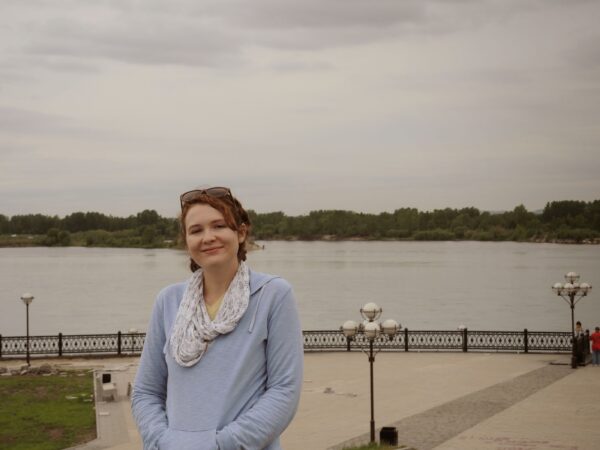
who turned 19 near that trip’s end and served as something of a surrogate granddaughter. It just so happened that Cairns was E’s hometown. Now, I didn’t know what I might expect to find in the telephone directory but S not only managed to procure one but found a listing that matched E’s initial and surname. She rang the number and left a detailed, if somewhat confusing voice message. Thinking I’d done what I could, I settled into a holding pattern awaiting a response. I promise to tell you more but for now you’ll have to wait along with me. And while we’re waiting, let’s see what we can learn about the
Great Barrier Reef.
Australia has 12 natural sites with a UNESCO World Heritage designation. We’d just come from Uluru – Kata Tjuta – one of the geologically older such sites. Our visit to the GBR would take us to its youngest. Here’s your first head shaking fact. When Australia’s First People arrived 60,000 years ago or longer, the modern structure of the GBR had not a single polyp in place. In fact, the Indigenous People would be shaping their relationship with Country for at least 40,000 years before even the oldest estimates suggest the GBR began to form.
(This might seem a bit hyperbolic and overly dramatic. Coral reefs themselves have existed for more than half a billion years and the fossilized remains of the underlying reef system has an estimated age of 500,000 to 650,000 years. The current reef would have begun forming atop the older dead structures.)
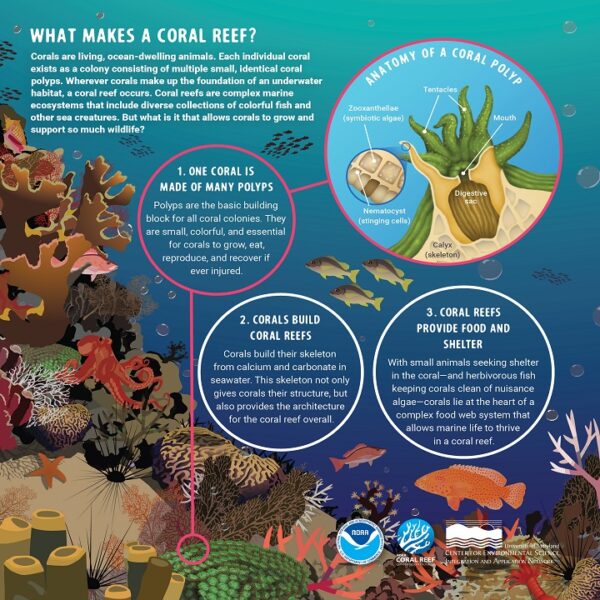
The oldest estimate of the age of the modern GBR is 20,000 years but it’s most commonly thought to be between 8000 and 10,000 years old.
Not a single unit but it’s big
You have to think of the GBR as a system – not just a marine ecosystem – but the reef itself is a network of nearly 3000 individual reefs comprised of at least 350 (and perhaps as many as 450 types of hard corals and another 150 species of soft corals. The reef itself can be as few as 15km off shore or as far as 160km. (We will be visiting the part of the reef near Michaelmas Cay about 40km east of Cairns.)
The reef network stretches for a length of 2300km and is but a single part of the Great Barrier Reef Marine Park that encompasses a total area of 344,400km² as seen on the map below.

[From Australian Government]
And how does that compare with other large reef systems? You can travel to the Caribbean Coast of Belize (about a two-and-a-half-hour flight to Belize City from Miami or Houston) to see the world’s second longest barrier reef. It’s 290km long or about one-eighth the length of the GBR. Ningaloo Reef of the coast of Western Australia places third at 280km long. (It seems this is another bit of WA worth exploring. I heard from several folks that Ningaloo is more accessible and every bit as fascinating as the GBR.)
Dave’s presentation included photos of some of the types of hard coral we might see like this Brain Coral

or this Staghorn Coral
to soft corals like this Spaghetti Coral.
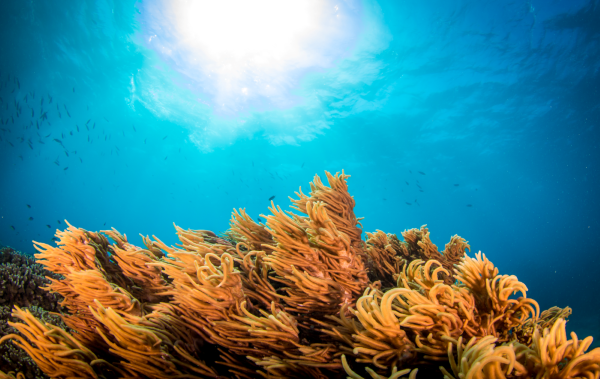
[From Great Barrier Reef Liveaboards]
He also clued us in to some of the fish we might see such as the parrotfish
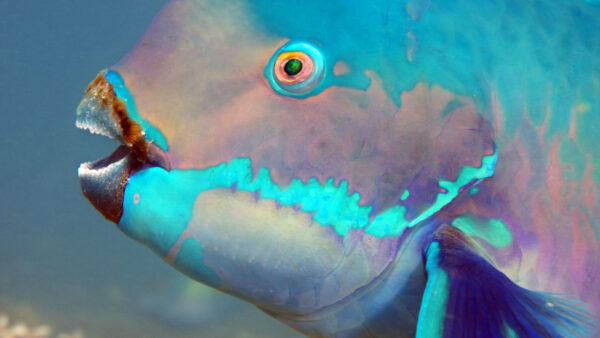
[From Great Barrier Reef Foundation]
and, of course, Nemo (AKA Clownfish).
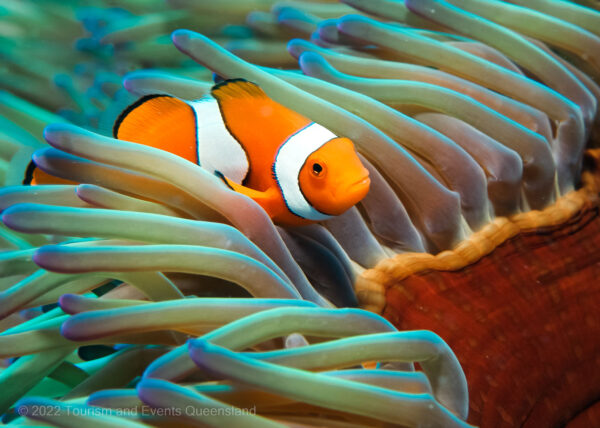
[From Great Barrier Reef Foundation Copyright Tourism and Events Queensland]
Dave also told us about the importance of a symbiotic photosynthetic algae called zooxanthellae (pronounced zo-uh-zan-thel-lie). This alga produces the nutrients – glucose, glycerol, and amino acids through photosynthesis that are essential for the coral’s survival and growth. The coral provide a protected environment and the materials necessary for photosynthesis for the algae thereby creating the symbiosis. They also contribute to the vibrant colors of corals. When corals expel their zooxanthellae, we call it bleaching. Perhaps most importantly, the symbiosis between corals and zooxanthellae is essential to the high productivity and biodiversity of coral reefs.
A day at the reef
(I am singing to the seas)
I’m sad to report that my experience at the GBR was something short of fantastic. First, I had developed a head cold and my rather persistent cough (thanks to K for sharing her cough lozenges) and congested nose (even greater thanks to M&J B for giving me their cold meds) precluded any snorkeling – an activity that would have been a stretch for me regardless. I did ride the very cramped and bumpy semisubmersible for my closeup look. But, here’s something to consider or at least to keep in mind. Water absorbs the longer spectrum wavelengths of red and orange gobbling up the former at about four meters deep and the latter by eight. Thus, while the fish in the reef system may have adapted to see lots of colors, much or what we humans see looks more like this

or even this
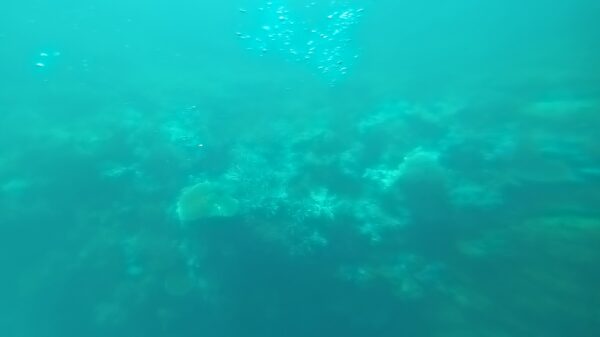
at least through the window of the semisub. Photographers almost always use a bright flash and occasionally long exposures so humans can see the vibrant colors.
For some in the group, the GBR might have been and anticipated high point and for others it might have become that. For me, it was little more than a box to check so if, upon learning that I’ve been to Australia, people ask if I’ve been to the Great Barrier Reef, I can honestly answer, “Yes. Yes I have.”
An offer most couldn’t refuse
I’ve commented in the past about the manner in which even small groups have a tendency to split into tribes that are smaller still. This RS group was quite the exception. Perhaps it was due to the group’s makeup of five couples and 10 singles none of whom had traveling companions. Perhaps all the pre-ordered meals – many of which were consumed at large communal tables – played a part. I can’t say. What I can report is that, while I connected more closely with certain people like J & M B and DC and DB than others, this was the most cordial and cohesive group (of 10 or more) with whom I’ve ever traveled.
RS had granted us a rare “Dinner at own arrangements” for our penultimate night in Cairns and, on the return to the hotel, I had S announce that I would buy the first round of drinks for anyone who wanted to join me for supper. Earlier in the day I’d prevailed upon the owner of Yaya’s Hellenic Kitchen –
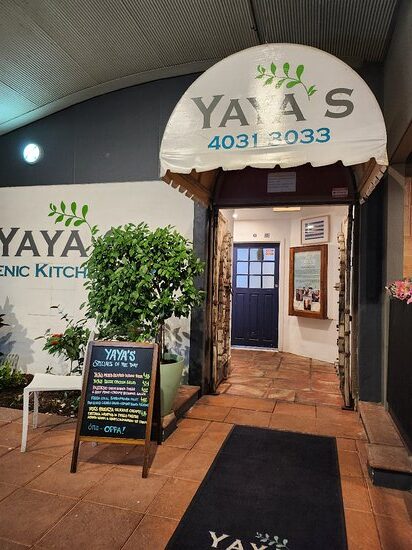
a Greek restaurant near the hotel to set aside a table for a group that could have been as small as eight or as large as 16 and to put the drinks on my tab but run a separate tab for everyone’s meal. Fifteen of the 19 other Road Scholars and J, our Group Leader, joined me at Yaya’s. (I’d invited S but she declined preferring to be at home for the evening.)
The meal was good enough even if I don’t think anyone would have called it spectacular. The congeniality, though, was exceptional.
Here are the rest of my blue-green pictures of the Great Barrier Reef and a few of the trip out and back.